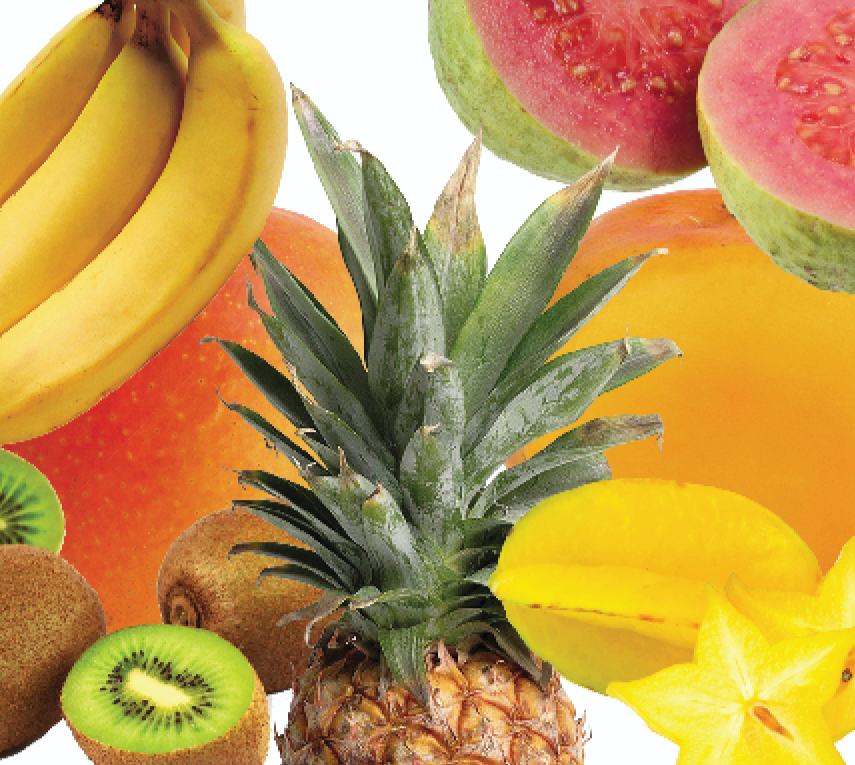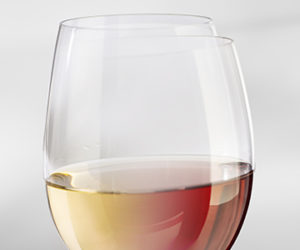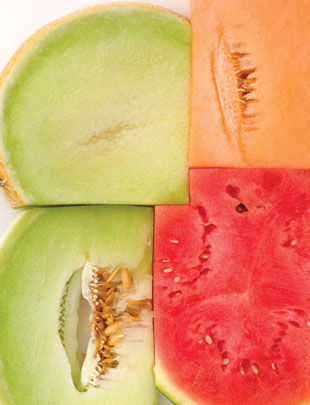 It seems as though when we think of wine, we think of grapes. Walk into your local wine shop, and you’ll find the racks are filled with dozens of wines produced from Pinot noir, Zinfandel, Cabernet, and other notable grapes.
It seems as though when we think of wine, we think of grapes. Walk into your local wine shop, and you’ll find the racks are filled with dozens of wines produced from Pinot noir, Zinfandel, Cabernet, and other notable grapes.
But what about wines made from other fruits? Since the development of winemaking as a hobby, it has become very easy for the home winemaker to make wines from affordable fresh fruits of the garden variety. And, don’t equate these wines to back-shed hooch. Today, you can make tremendous country wines — plants other than grapes. They include apricot wines that rival the complexity of any $10 Chardonnay or red currant wines that go just as good with prime rib as a bottle of Merlot.
Country wines are no more difficult to make than wines from fresh grapes. The basic process is the same, and consideration is given to the same aspects as when preparing grape juice for winemaking.
Grape juice is naturally suited for making wine and needs little adjustment prior to fermentation. In many parts of the world (California included) grapes supply enough sugar and the proper amount of acid to produce stellar wines without adjusting them at all except fermenting, but they are still checked and at times slightly modified.
But with fruits other than grapes adjustments are almost always necessary but are very easy to accomplish. Consider the following. 1) The amount of fruit needed per gallon. 2) The amount of available sugars needs to be tested and adjusted. 3) The juice’s acidity needs to be tested and adjusted. 4) Nutritional specifications, such as yeast food, should be considered for the yeast to thrive during fermentation. While this may seem like a lot to think about, it’s easy and requires little time.
The tradeoff is it allows you to take just about any fruit you can imagine and produce a notable wine that quite often will surprise the winemaker. Examples of fruits you can use to create these country wines includes stawberries, plums, watermelons, peaches, blackberries, gooseberries, and persimmons.
Fruit
As with any wine you must start with the fruit. No wine can be better than the fruit used to make it. Careful attention should be given to its quality. Doing so will repay you many times over in the form of consistently superior wine.
Check your fruit. Molds and bruises should be minimal. The fruit should also be rinsed off before it is crushed; just as if you where cooking with it. In most cases the fruits used in country wines should be fully ripe. Fruits picked too early have a tendency to make wines that lack in that fruit’s particular character. For example, a pear wine will taste more like an apple wine unless the pears are allowed to reach full maturity.
Unlike grape wines, which are pure grape juice, country wines are usually diluted with water. The main reason is that certain fruits, such as elderberries, are simply too strong in flavor (too astringent). The second reason is that some fruits are too high in acid and would produce a wine that is too sharp tasting. An example of this would be gooseberry.
On the other hand apple wines are made with pure apple juice and need additional fruit acid added to them. So quite clearly there is no strict rule that can be applied when it comes to determining the amount of fruit or water to use in a country wine.
There is no single corrrect amount of fruit to use, but the following chart will give you a guideline.
The following list is a guideline of the amount of fruit to use to produce a five-gallon batch:
- Apricots 18 lbs.
- Blackberries 15 lbs.
- Blueberries 13 lbs.
- Currants 12 lbs.
- Elderberries 10 lbs.
- Gooseberries 11 lbs.
- Peaches 15 lbs.
- Pears 22 lbs.
- Persimmons 15 lbs.
- Pineapple 14 lbs.
- Plums 16 lbs.
- Raspberries 15 lbs.
- Strawberries 16 lbs.
- Watermelon (Centers) 18 lbs.
The above recommendations can vary because you may want to make your country wine sweet and high in alcohol like a dessert wine or dry and crisp like a table wine. (The difference is sugar concentration.) For example if a recipe calls for 13 pounds of blueberries for five gallons of wine you might go up to 16 pounds if you want your wine heavy like a Burgundy. Or you might use eight pounds if you prefer light-bodied blush wines. But deviating much beyond this would not be sound. It’s a good idea to have at least 10 percent alcohol (and adequate acid) for a dry wine or you run the risk of stability problems, because microorganisms love to live in wine when given a chance. Also wines that are low in alcohol and acid will taste flat and flabby.
Just as with grape wines, leaving the pulp with the juice for the first week or so of fermentation will also intensify the wine’s body and character and deepen its color. The pulp is where a lot of a fruit’s character lies.
During this fermentation period the pulp is broken down, and a considerable part is liquefied with pectic enzymes. Tannins and other goodies that reside in the pulp are eventually released into the juice. By utilizing the pulp in this manner, not only are you producing a wine with more body and character, but you are also producing a wine that is more stable and will retain its flavor and color for longer periods of time.
Sugar
The second factor you should consider when preparing a juice for making wine is its beginning sugar level. This helps determine fermentation. Fermentation is the process by which yeast consumes the available sugars in your juice and turns that sugar into half alcohol and half CO2 gas by weight. The amount of sugar you start off with determines the amount of alcohol you’ll end up with.
This is where the hydrometer turns into your best friend. The hydrometer helps you to determine how much sugar you have in your juice, as well as how much alcohol that sugar can make. Furthermore, it helps you to determine how much sugar to add to your fruit juice.
You can purchase a hydrometer at any wine or beer making shop for less than $10, directions included. The hydrometer is simply a glass tube with a weight on one end that floats. You take a sugar-level reading with it by observing how high or low it floats in the juice. The hydrometer is most accurate at 60° F but can be read at other temperatures by adjusting the scale. Correction tables are available in most kits. Most hydrometers have a scale on them call potential alcohol. By reading this scale you will know if you need to add more sugar. As a rule, for every pound of sugar you add to five gallons you will raise the potential alcohol by 1 percent.
Now we come to the question, what type of sugar is best when adjusting your country wine’s sugar level? This is somewhat of a loaded question that wineries dodge for the most part. This is because they have the luxury of obtaining all the sugars their juices need naturally from the grape. So there hasn’t been much research done on the subject. But there have been many opinions expressed.
Consider all of them. Different sugars add different characters. Cane sugar, corn sugar, beet sugar, brown sugar, rice sugar, fructose, and even malt sugar all have a place in country winemaking. It depends on personal preference and the situtation in which the sugar is to be used. If you’re not sure what to use stick with the cheapest — cane sugar or corn sugar. But by all means feel free to experiment.
Honey is another story. “Pyment” is a term used for fruit wines with honey added to them. Honey in its simplest form, has the advantage of adding an “herbal” finish to a wine. And, when using honey that’s spun off a particular blossom, the resulting creation can be tremendous. For example, raspberry juice with raspberry blossom-spun honey can make an extraordinarily well-rounded wine.
You can also use concentrated fruit juices along with your fresh fruit juice as a source of additional sugar. This method will also increase the body of the wine and intensify the wine’s fruitiness. So, if a less assertive country-style wine is desired this would not be appropriate. Concentrated fruit juice also will increase the acid level of a juice. This may be good or bad depending on whether the juice needed the acid or not.
Acid Levels
Having the proper amount of acid in your wine has two distinct benefits. Not only will it enhance the wine’s overall character, but it will also significantly aid fermentation. It will also keep the juice more stable during fermentation by supressing the growth of micro-organisms that may have found their way into the fermentation vessel.
Acidity varies drastically from fruit to fruit. You’ll never pucker eating a banana, but it has acid just as gooseberry or lime, only less of it. Couple that with the fact that the amount of fruit you use for each gallon of country wine varies too, and it starts to become clear that adjusting your acidity is a necessity.
There are two basic ways to check your juice’s acidity level. The cheapest and quickest way is to use pH testing strips (litmus papers). They cost about $6 for a vial of 100 strips and for the most part are accurate enough for home winemaking. However, it is not the most accurate way to check acidity levels. pH strips test for all acids in the juice regardless of how tart they are to taste. So you can get deceptive readings from time to time when it comes to pH vs. imparted flavor.
The second and most accurate way to test a juice’s acidity is by doing a titration. You can buy a titration kit (with directions) for as little as $9, and it will be good for many tests. With just a few minutes of practice you can easily master the procedure. A titration kit measures acid in relation to how sharp it actually tastes on the tongue.
If a wine has too much acid, it tastes sharp, sour, or bitter. If a wine doesn’t have enough acid, it tastes flat, bland, or lifeless. Some people describe it as Kool-Aidy. After testing and adjusting your juice’s acidity level it should taste fruity.
Acid plays an important role in ensuring microbial stability and healthy fermentation. The pH for grape fermentation should be about 3.5. There are three fruit acids commonly found in a winemaking shop that can be used for adjusting a juice’s acidity: tartaric, citric, and malic. You can buy them individually or buy them together as an acid blend. The latter is most commonly used and is what is called for in most recipes. All come in a granulated form that is easy to dissolve. It is best to stick with tartaric acid because it is the only one that cannot be metabolized, which means it will remain. Malic acid can dissapear during an unplanned malo-lactic fermentation, and citric acid can be metabolized by certain organisms. It may take as much as three ounces of fruit acid to bring five gallons of country wine to a normal level, about 0.5 to 0.6 percent tartaric acid.
Adjustments
Once you have prepared your juice with the appropriate amount of fruit and have adjusted the sugar level and the acid level as well, you now have a juice that is very similar to grape juice. In fact, the process from here on is exactly like making wine from grape juice. And, you can now call your prepared fruit juice a must.
Detail on the fermentation process is outside the scope of this article, and there is nothing unique to country wines in this area. Add a suitable all-purpose wine yeast and appropriate nutrients such as di-ammonium phosphate and yeast extractive proteins and let it ferment just as you would any grape wine.
One of the most fun aspects of making country wine is getting it ready to bottle. This is a time when an average wine can blossom into something spectacular. Yet, I see many home winemakers, even very experienced ones, gloss over this procedure. Many home winemakers have the impression that once the fermentation process is complete, they have no further control over it. In reality, nothing could be further from the truth.
There is a vast array of things you can do to adjust a country wine’s flavor for the better. While it does take time to learn what to adjust and why to adjust it, you’ll never learn by not experimenting.
You can sweeten you country wine a little or a lot. You can blend it with other country wines. You can do a final acid adjustment by taste. You can add spices such as ginger or cinnamon. You can add oak chips for a barrel-aged effect and as a flavor and body enhancer. You can even fortify your wine with brandy, which most commercial wineries use to fortify, or with vodka. While this may sound like cheating, if you don’t consider these options you’ll only be cheating yourself.
One very important rule when making these adjustments: Test in small amounts. For example, if you have a five-gallon batch ready to bottle, take a measured half gallon off and experiment with that.
If you don’t get the results you want blend it back with the remaining 4.5 gallons and move on. If you like what you did, duplicate the adjustment to the other 4.5 gallons. Not only is using this method less likely to ruin the wine, but is also makes it less intimidating for the beginning winemaker.
One of the primary techniques you can use in a country wine at the bottling stage is to sweeten it to taste. If the fermentation process went as planned the wine should be dry (no sugar). Typically garden-type fruits such as do not do well extremely dry, so at least a touch of sugar before bottling is recommended. You’ll find that a little bit of sugar will enhance the fruity character of the wine significantly. A wine stabilizer such as potassium sorbate should also be used when sweetening a wine to eliminate the chance of re-fermentation in the bottles.
And again, you can experiment with the type of sugar(s) used to sweeten. Just as when you where preparing your must for fermentation.
The correct amount of sugar for sweetening a wine cannot be determined by the hydrometer but only by taste. Balance is the key word here. And only experience will help in obtaining balance in a wine.
The same holds true for other flavor adjustments. Balance should be the focus. If for example you have made a pumpkin wine and come up with the idea of adding pumpkin spice to it before bottling, adding too little pumpkin spice will only complicate the wine’s flavor to an annoying degree. Adding too much pumpkin spice will turn the pumpkin wine into spice wine with an annoying amount of pumpkin in it. The pumpkin spice should complement the pumpkin flavor not complicate it or overwhelm it.
Blending
Blending country wines can be fun. With blending it is possible to take two or more average wines and blend them into something of remarkable taste. An example of a blended wine is Robert Mondavi’s Opus One, which is a special blend of grape wines made each year and is consistently considered one of the top wines on the market.
Whether or not winemakers like banana wine, some country-wine makers keep some banana wine in bulk storage. The reason is it blends quite well with many country wines. It adds significant body without imparting an assertive flavor of any kind. So, you could take a strawberry wine, for example, and increase its texture and body by blending a little banana wine with it.
Elderberry wine also blends well with other country wines. It tends to deepen the berry character and can add a Nouveau-Beaujolais twist, so to speak, to a wine such as raspberry.
That’s a couple of examples of why you should consider blending. Another reason is maybe you ended up with a blueberry wine that is sharp or sour tasting. Don’t pour it down the drain; make another batch of blueberry, but only make it lower in acid this time and then later blend the two together.
The real point here is to have fun; be creative and don’t be afraid to try what’s on you mind. The most it could cost you is a half gallon of wine. The benefits will most assuredly be experience and quite possibly a wine that will dazzle you, your friends, and even the winery down the road.






